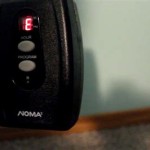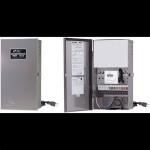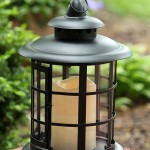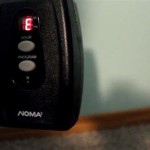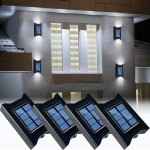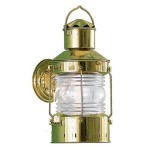How to Build an Outdoor Boiler Furnace
An outdoor boiler furnace is a versatile heating system that can provide warmth for your home, hot water for your plumbing, and even heat for a swimming pool or greenhouse. These furnaces are typically fueled by wood, but can also run on other biomass materials such as pellets or corn. They are a popular choice for those who want to reduce their reliance on fossil fuels and enjoy the benefits of a renewable energy source. Building your own outdoor boiler furnace can be a challenging but rewarding project. It requires careful planning, proper materials, and a thorough understanding of safety regulations. This article will provide a step-by-step guide to help you build your own outdoor boiler furnace.
1. Planning and Design
The first step in building an outdoor boiler furnace is to plan and design the system. This includes determining the size and capacity of the furnace, the type of fuel you will use, and the location of the unit. It's crucial to consider factors like the size of your home, your heating needs, and local building codes and regulations.
Start by calculating the heat output required for your home. This can be done by consulting a heating contractor or using online calculators. Once you know the heat output you need, you can choose a furnace size accordingly. The type of fuel you choose will also influence the design of the furnace. Wood burning furnaces typically have a larger combustion chamber than pellet-burning models. You'll also need to consider the location of the furnace. It should be placed on a level, non-combustible surface, away from flammable materials and structures. Adequate ventilation and clearance from walls and fences are also crucial for safety and optimal performance.
2. Materials and Tools
The materials required for building your own outdoor boiler furnace may vary depending on the design you choose. However, some common materials include:
- Steel plates and tubing
- Firebrick and refractory cement
- Welding equipment
- Insulation materials
- Water pipes and fittings
- Chimney and flue components
- Safety equipment
- Tools for cutting, drilling, and welding
Many of these materials can be acquired from local hardware stores or online retailers. Ensure you choose high-quality materials that are specifically designed for high-temperature applications. Always wear appropriate safety gear and follow the manufacturer's instructions when working with any power tools or hazardous materials.
3. Construction Process
The construction process for an outdoor boiler furnace can be broadly divided into several stages:
- Fabricating the Firebox: The firebox is the heart of the furnace, where the fuel is burned. It is typically made of heavy-gauge steel plates welded together to form a durable, airtight chamber. You’ll need to carefully assemble the firebox, leaving openings for the door, ash pan, and flue.
- Installing Firebrick: Firebrick is used to line the interior of the firebox, providing insulation and protecting the steel from high temperatures. It should be installed in a specific pattern, ensuring a tight fit and proper support.
- Adding Water Jackets and Heat Exchanger: Water jackets are essential for transferring heat from the firebox to the water system. These are typically made of steel tubing or plates that are welded to the firebox exterior. The heat exchanger is a separate component used to transfer heat from the water to your home's heating system or other applications.
- Installing the Chimney and Flue: The chimney and flue are responsible for venting the combustion gases. It’s important to choose the right size and materials to ensure adequate draft and safe operation. Connect the flue to the firebox using a strong, leak-proof seal.
- Insulating the Furnace: Insulating your outdoor boiler helps with efficiency and reduces heat loss. Apply insulation material to the exterior of the firebox and water jackets. This will help to retain heat and prevent condensation.
- Finishing Touches: Once the furnace is assembled, you can add finishing touches such as a door for loading fuel, an ash pan, and a weather cover for protection.
Throughout the construction process, it is crucial to prioritize safety. Ensure you wear personal protective equipment (PPE), follow manufacturer safety guidelines, and work in a well-ventilated area. It is also essential to regularly inspect your work for any potential safety hazards and address them promptly.
4. Installing and Commissioning
Once the furnace is built, you'll need to install it and connect it to your heating system, hot water tank, or other applications. The specific installation process will vary depending on the design and your specific requirements. However, some common steps include:
- Connecting the Water Lines: Carefully connect the water lines to the furnace, ensuring all connections are tight and leak-proof. You'll need to use appropriate fittings and valves to control the water flow and pressure.
- Connecting the Chimney and Flue: Ensure the chimney and flue are properly installed and securely connected to the furnace. Refer to local building codes and regulations for specific requirements.
- Testing and Commissioning: After the installation is complete, it is crucial to test the furnace thoroughly. This includes filling the water system, starting the fire, and checking for leaks or any other issues. During the initial commissioning phase, it’s essential to monitor the furnace’s performance and make any necessary adjustments.
It is highly recommended to consult with a qualified professional for the installation and commissioning of an outdoor boiler furnace. They can ensure the system is installed correctly, meets all safety regulations, and operates efficiently.
5. Maintenance and Operation
Maintaining and operating an outdoor boiler furnace is essential for ensuring its longevity and safety. Regular maintenance can prevent problems and ensure optimal performance. Some important maintenance tasks include:
- Regular Cleaning: Clean the firebox, ash pan, and flue regularly to prevent buildup of ash and creosote, which can lead to fire hazards and reduced efficiency.
- Inspecting for Leaks and Damage: Periodically inspect the furnace for leaks, cracks, or other damage. Address any issues promptly to prevent potential problems.
- Checking the Water System: Regularly check the water pressure and levels in the system. Make sure the water is circulating properly and there are no leaks.
- Fuel Storage and Handling: Store fuel properly, away from heat sources and other flammable materials. Follow safety guidelines when handling fuel.
Understanding how to operate your outdoor boiler furnace safely and efficiently is essential. Always follow the operating instructions provided by the manufacturer, and be aware of the potential hazards associated with fire and high temperatures. It’s important to have a working smoke detector and carbon monoxide detector near the furnace.

Plans How To Build A Wood Outdoor Boiler

Plans How To Build A Wood Outdoor Boiler

Plans How To Build A Wood Outdoor Boiler

Outdoor Wood Burning Furnace Boilers From Madison Wi To E Iowa

How An Outdoor Boiler Works Ez Boilers

How Heat From A Central Boiler Outdoor Furnace Gets To Your Home Wood Furnaces Of Ohio Llc

Outdoor Wood Coal Boiler Installation

Best Outdoor Wood Furnace Central Boiler

Cleanfire Outdoor Wood Furnaces

Plans How To Build A Wood Outdoor Boiler
Related Posts
